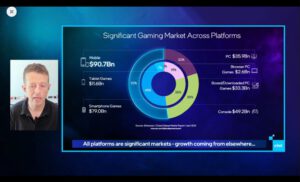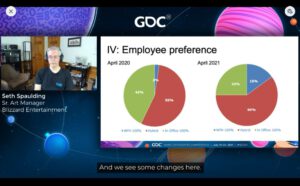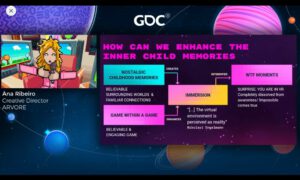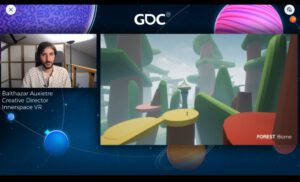After two showcase placeholders in 2020 and in springtime of 2021, the Game Developer Conference came back on the stage with a full-fledged virtual program this summer. The week-long program covered the traditional theme tracks for deep dives into everything that matters in game development. Most sessions were prerecorded, but lecturers were available in the live chat during the streaming event.
Due to the displacement for pandemic conditions, this virtual edition of GDC was time shifting between catching up on pre-pandemic topics, showcasing the latest developments in remote productions and making evaluations for post-pandemic perspectives. As usual, Blockbuster postmortems proudly represented the industrial achievements, and Indie productions showcased creative twists.
GDC also demonstrated how business diverse the game industry has become. Presentations on cinematic subscription models, theme park creation workshops, discussions on gamified education and behavior analysis of immersive working environments lined up side by side with the traditional tracks for game design, production, audio and marketing.
XR had its own track with exciting reflections on the state of VR, MR and AR. Significantly, the immersive theme track opened with a legal lecture on upcoming business challenges for spatial computing, focusing on learnings from the established entertainment and tech industry. Many of the following production descriptions noticeably dealt with the same query of backward compatibility to familiar business frameworks in their presentations on immersive computing.
‘Familiarity’ was a key word in many XR presentations, no matter if they referred to the toy industry for a Nintendo MR experience, to previous Kinect mechanics for VR game ports and theme park installations, or to VR mini-game collections based on retro design and childhood memories. The more VR becomes a business segment of the game industry, the more the industry checks back with established orientation frameworks for casual audiences, motion sensor mechanics and recollections of previous business cycles.
In this perspective, VR has now passed the state of novelty and prepares for deeper elaborations of the currently disposable game mechanics in numerous variations on rather equivalent platforms. Innovation for the development of VR can only be expected at the sidelines of the interactive entertainment industry or in the background of the production procedures. The most inspiring moments in the XR track at this year’s GDC came from off-game shores like virtual theater performances, behavior tracking in enterprise VR and the use of VR technology in the design and production process.
Although the application of mobile monetization models, in-game advertisements, game genre porting and add-on strategies in VR either failed or resulted in baby step advancements, the interactive entertainment industry continues to go through the historical repertory in search of a familiar success formula. This summer’s transitory GDC cared about reassurance in business backward compatibility while featuring familiarity as a key component for levelling up the industry. The actual thrive of pandemic gaming successes may indicate that redesign provides a safe way to keep the dynamics running. But in uncharted immersive entertainment, you need something more compelling people can subscribe to before going for a Metaverse.













